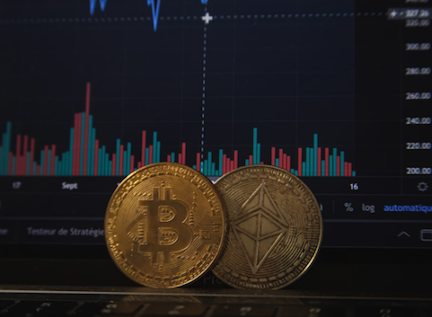5 Steps That Made Cryptocurrencies Legitimate
A long time ago, in the era of the Silk Road (before it was closed by the FBI), the majority of transactions there were conducted via cryptocurrencies. People use these cryptocurrencies to pay for all sorts of illegal and unethical activities.
Unfortunately, since cryptocurrencies still weren’t used by the general population, this is what a lot of people got to know them for.
Today, the story is completely different, and the shoe is on the other foot. Cryptocurrencies are household names, and there are more users than ever before. So, how did cryptocurrencies grow from something borderline illegal and completely obscure to something that, in 2024, everyone and their grandmother want to buy?
Here are five factors we believe contributed to this the most.
1. Increased regulation
One of the first things you need to understand is that the governments, financial institutions, and legal enforcement agencies were never going to put up for long with something that’s used for illegal activities. The same goes for assets that have the potential to be used this way.
The only way these measures and regulations were postponed is the fact that the concept still wasn’t so big, so it could, for the most part, fly under the radar.
Moreover, this was a new concept, and there weren’t enough experts on the subject matter ready to tackle the issue.
None of these things is true anymore.
You see, one of the biggest problems with current crypto is its use for money laundering. For the most part, there are regions in the world where cryptos are still unregulated. By their decentralized nature, they’re also harder to track, which makes them ideal for these activities. With the help of concepts like AMA and KYC, the proper use of financial systems and assets can be guaranteed.
With more and more regulation, a lot of these bad actors just realized that they were fighting an uphill battle and that it’s only a matter of time before they’re caught.
2. Growing acceptance
Due to its history, cryptocurrencies didn’t have a stellar reputation early on. In the mind of regular people (who even heard of it) this was something that was used either by programmers or criminals.
The problem is that with any asset, reputation is everything. Trust determines people’s willingness to buy, and this is something that will impact both market value and capitalization in the long run.
Something used by criminals to order a hit or set up a fire is never seen as a naive or a positive thing in the minds of regular people. However, what happens a decade later when you can receive your salary from a reputable company this way? What happens when you can buy a hot dog using this asset?
Most importantly, what happens when so many people try to emulate success by looking for tokens that could explode in the following period? After all, many people have become millionaires this way, and you won’t persuade them that it’s impossible to emulate their success.
When you see so many ordinary people, reputable businesses, and even celebrities use this in their day-to-day, the public trust skyrockets. Sure, this didn’t happen gradually, but in bursts (every time BTC exploded in value); however, you need to keep in mind that this is still a young asset (just 15 years old).
3. Better security
For a lot of people, the only secure asset is something that you can hold in your hand. They even avoid digital fiat currencies believing that someone at the bank could just push a button and everything they own would disappear.
Sure, this fear is not unfounded, but it just depends on the way you choose to look at the world. A person high up could push a red (nuclear launch) button for the whole world to disappear but does this mean that owning physical property is absurd? Of course not!
Still, it would also be ridiculous to assume that the level of cybersecurity today is the same it was in the past.
The next massive advantage came from the improvement in the field of blockchain. Once people understood what blockchain is and how it works, it became apparent to them that cryptocurrencies cannot be made out of thin air (not in the way that you think).
The best part is that the blockchain started living a life of its own. It became a strong asset, independently of the cryptos that it was originally tied to. Today, it’s used in smart contracts and many other concepts, but its potential seems to be virtually unlimited. It goes as far as the gaming world sees it as a solution to the problem of cheating in eSports and competitive multiplayer ladders.
4. Greater awareness and education
Hearing about crypto and roughly knowing what it is might be a great start but, at one point, it’s not enough. Saying that, today, more people know how to buy crypto, understand how crypto wallets work, and know of a few biggest exchanges. It also doesn’t represent as big of a feat as you would think.
After all, this is a new asset, and it’s only logical that with each new year, we’re hitting new records in the number of users.
The difference is that we’ve reached a critical mass where more people know the process behind buying crypto than buying stocks. When it comes to stocks, people just know they need a broker. With cryptos, the process of getting a crypto wallet seems a lot simpler.
Also, there are far more sources and learning materials on this subject that are available to everyone (not hidden behind a paywall).
5. Media coverage and perception
Today, cryptocurrency is seen as either money or an asset (and it is both of these things). Even people who are skeptical about it are usually skeptical about its potential of BTC to reach the 100k mark, not about whether it’s real or not.
The way the media reports on it is also much different. Just take a look at the number of crypto-related news on major news outlets and compare this to the number of news in the first ten years of its existence.
Since more and more countries and government bodies are regulating crypto, there are also more and more portals covering these topics. Once you hear your representative talking about crypto in a positive light (or at least taking it seriously), it becomes apparent to you that this is not something to be taken lightly.
All of this affects public perception. Even for those who do not intend to buy or own crypto, this asset is now on the radar. They know what it is, and, in a scenario where it’s brought up in the conversation, they don’t just tune out because they’ve heard “tech speech.”
Crypto has come a long way but it has an even longer way to go
Once again, you need to acknowledge the fact that the first cryptocurrency came into existence in 2008. We’re talking about a bit over 15 years. So, comparing it to stocks, which have existed for centuries in some form, or a commodity gold, that’s been used for thousands of years as a currency, isn’t completely fair. Still, crypto has already managed to establish itself as a mainstream asset and a force to be reckoned with (far sooner than anyone expected). If this trend continues, there’s no way of telling where it will go from here.





















